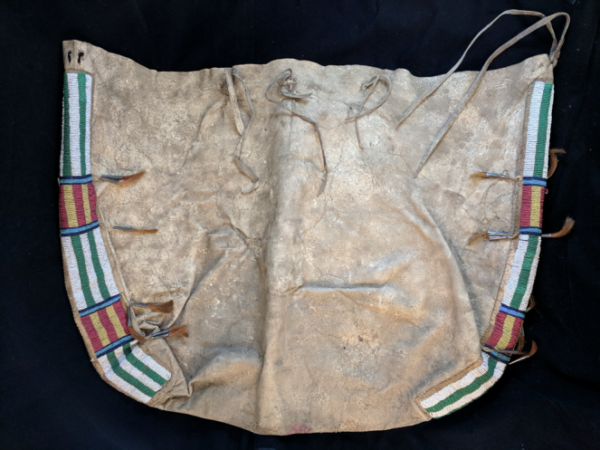In the first centuries after European contact, groups of Native Americans were forced westward by the Iroquois and by European immigrants into the Great Plains region. These previously agricultural peoples were enabled to survive in this region through the introduction of the European horse to North America, as this allowed them to travel and reach important resources more easily. As these peoples developed a nomadic way of life, they adapted to this life by creating new tools such as sturdy, well-designed leather bags that could be tied to a travois or to the saddle to transport goods and belongings.
As time passed, Great Plains women began to decorate the leather bags with beadwork, quillwork, horsehair tassels, and metal cone tassel holders and tinklers. The different cultures living on the Great Plains also began to develop more individualized designs and color schemes for their decorations on leatherwork. This saddle bag is likely Cheyenne, as the beadwork is sewn on using a tight lazy stitch technique that creates straight rows of beads, as compared to techniques used by such cultures as the Lakota, who preferred longer strands and gently arched rows of beads. This bag is also likely Cheyenne because it is decorated with beaded bands in the Cheyenne sacred stripe style that uses the directional colors of red, white, and yellow. While the fourth directional color of this group was usually black, black was sometimes replaced with dark blue, and after 1880, additional colors were adopted, such as the lighter blue used on this bag.

Cheyenne culture?
ca. 1880s
Leather, beadwork, horse hair, metal, thread, and sinew,
L. 59.5 cm x W. 6.8 cm x H. 53 cm
Ralph Foster Museum collection #20.448
For more information, you may contact the researcher(s) noted in the title of this exhibit entry, or Dr. Billie Follensbee, the professor of the course, at BillieFollensbee@MissouriState.edu
